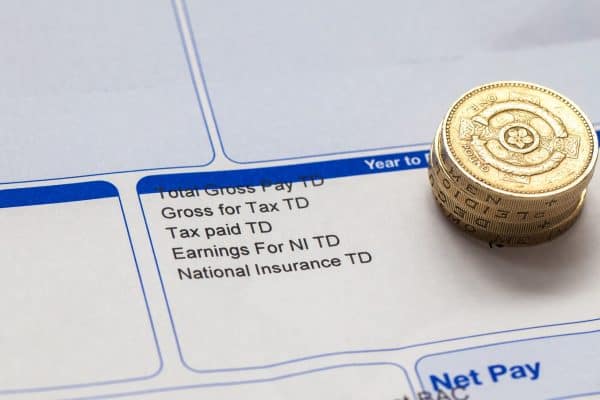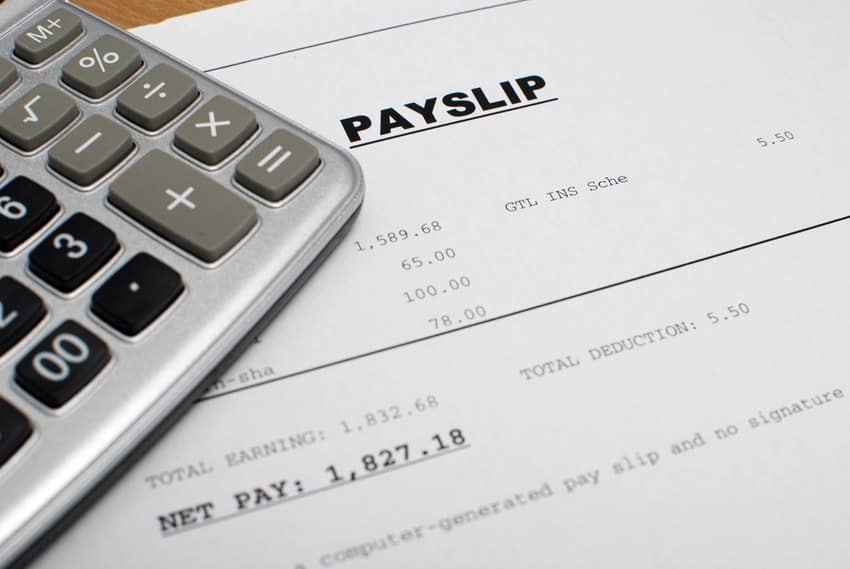When you get your payslip each payday, are you guilty of just filing it away, never to be looked at again? Or do you check what you’ll be paid, and then ignore the rest?
We all have a responsibility to check that the numbers in our payslip add up. After all, we’re each accountable for the amount of tax we pay, and nobody wants to be landed with a bill from HMRC!
Your right to a payslip
If you consider yourself an employee of a business, then you’re entitled to a payslip each time you get paid. This covers everyone, whether your job is a stable 9-5 or more unpredictable casual work. If you’re self employed as a freelancer or an independent contractor though, you won’t get a payslip from the business you’re working with, as they aren’t technically employing you.
Payslips don’t have to be on paper these days, although many of us still like to keep paper records. Some companies send payslips to their employees by email as a password protected file. Others make them available to download from a website. All are perfectly valid as long as the payslip you receive contains the right information.
Your payslip should be detailed
There may be a lot of numbers and unfamiliar codes on your payslip, but rest assured, this is not meant to fool you! The amount of detail you get is actually a requirement for the most part. All payslips must show:
- Your gross pay (the amount you’re paid before any deductions), which should factor in any overtime, tips or bonuses you’re being paid for
- The amounts of any “variable” deductions that could change from payday to payday
- The amounts of any “fixed” deductions that won’t change between paydays
- Your net, or “take home” pay
- The amount and method of any part payment. For example, if your employer is paying you half to your bank account and half in cash, this should be detailed
Your deductions
As we touched on above, there are two types of deductions that must be detailed in your payslip. These are called “variable deductions” – those which could change from payday to payday – and “fixed deductions” – those which will not change between paydays no matter how much or little you earn.
Variable deductions
The two variable deductions that the vast majority of us pay are tax and National Insurance. How they’re calculated depends on how much you earn, and on the allowances granted by the government each tax year. In both cases, you can earn a certain amount before you’re required to contribute. Then, you make contributions on your pay above this amount as a percentage of your salary. The more you earn, you’ll find that there are additional thresholds that increase your contribution. You can find out more about your contributions and how they’re calculated on gov.uk.
Tax and National Insurance aren’t the only variable deductions we may see on our payslips, though. Pensions, student loan repayments and child maintenance can all be deducted from our salaries as a percentage of what we earn. You can make other arrangements to pay for these things without them going through payroll, but many people find it more convenient to pay this way.
Fixed deductions
If your employer has a benefits or rewards scheme that allows you to access services that they pay for or contribute to, then you’ll see your contributions to the ones you’ve opted in to on your payslip. Health insurance, dental cover, gym memberships and season ticket loans are all good examples of fixed deductions. Sometimes your employer will have a code for each benefit you’re making use of, so it may be the code rather than the name of the deduction that you see. If you’re not sure which is which, then speak to your HR department.
Other information that your payslip may include
While there are certain details that employers must include in a payslip, many choose to include a lot of other information that’s useful to you or them. Some examples are:
- Payroll number – the unique reference that your employer uses to identify you in their payroll system
- Tax code
- Your National Insurance number
- The date you’ll be paid
- The tax period. Remember that the tax year runs from April to April, so this won’t line up directly with the months of the calendar year. If the tax period on your payslip is “1”, for example, this means it’s for April. “2” is the code for May, “3” for June, and so on. If you get paid weekly, the tax period shown could take another format to help you and your employer identify which week in the month each payslip is for
- Expenses. Some employers will repay expenses you charge back to them through the payroll system. This could be petrol or train tickets for a business trip, or a professional subscription you pay for as part of your job. Whatever it is, it should be listed on your payslip if it’s being paid back to you
- Details of how your gross income is calculated. This is especially important if your income is made up of more than your base salary, like commission, overtime or bonuses as it’ll list out how much of each makes up the total number. Your employer might also include your pay rate, however that’s calculated, in your payslip
What to do if something doesn’t look right
If something you see in your payslip doesn’t look right to you, or you don’t understand something, don’t sit on it. It may be nothing, but it could also be something that lands you with a bill from HMRC! Speaking to someone from your payroll department is ideal, but many businesses use external payroll providers so it may not be practical! A colleague from HR or your line manager are likely your best bet in this case.
Remember to keep all your payslips safe, too!





















